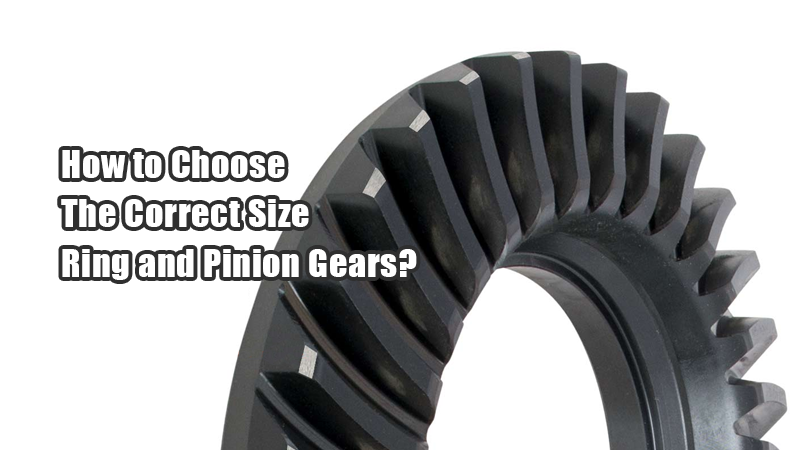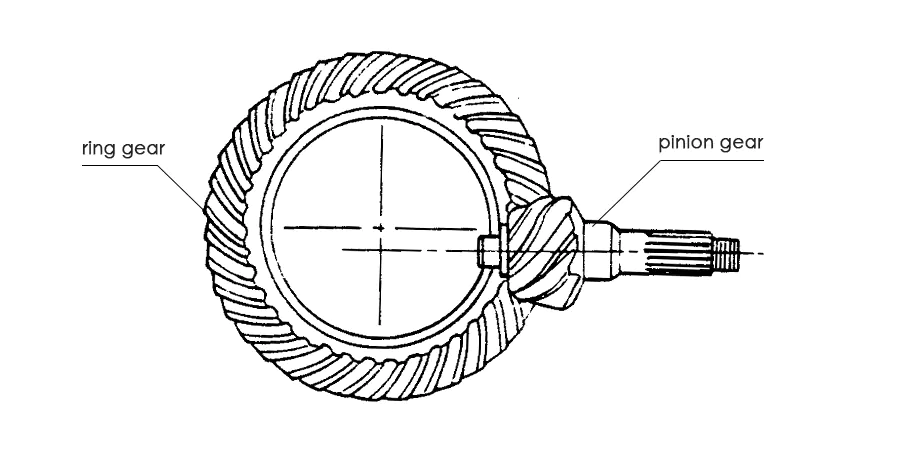When you change your tire size, tow heavy loads, or modify your vehicle for off-road use, one of the most overlooked—but most important—upgrades is choosing the correct ring and pinion gears. This isn’t just about improving power. It’s about making your whole drivetrain work in harmony.

So, how do you choose the right gear ratio without relying on guesswork or generic charts?
Let’s walk through what really matters when it comes to selecting the right ring and pinion gear size for your vehicle—and more importantly, why it matters.
Bigger Tires Change Everything
One of the most common reasons for re-gearing is after installing larger tires. Many drivers are surprised to find that their vehicle feels sluggish after upgrading to 33s, 35s, or 37s. That’s because larger tires rotate fewer times per mile, which effectively lowers your gear ratio. In simpler terms, your engine and transmission now have to work harder to turn those heavier wheels.
If you don’t correct that imbalance by upgrading your differential gears, you’ll likely feel a loss of power, poor throttle response, and constant gear hunting on the highway. In severe cases—especially when towing—this can even overwork your transmission and lead to overheating.
That’s where ring and pinion gears come into play. By increasing the numerical gear ratio—say, from 3.73 to 4.56 or 4.88—you bring your engine’s RPM back into its optimal range, restoring the driving characteristics you lost.
One Size Doesn’t Fit All
While there are general guidelines about matching tire size with gear ratio, the truth is that your ideal setup depends on how you use your vehicle.
For example, if you’re building a rock crawler or driving steep trails, you want a deeper gear ratio to give you better low-end torque. On the other hand, if your vehicle is primarily used for highway cruising, you’ll want to avoid extremely high ratios that cause excessive RPM and hurt fuel economy.
Towing adds another layer. If you’re pulling a trailer or carrying heavy loads regularly, you need to optimize your torque curve at lower speeds to reduce strain on your engine and transmission. In these cases, choosing a slightly higher gear ratio than normal makes a significant difference in both performance and longevity.
What’s important to understand is that gear ratio isn’t just a number. It’s the link between your tires, your engine, and how your vehicle moves. When all three are in sync, your driving experience becomes smoother, more responsive, and more efficient.
Know Your Axle and Its Limits
Before you choose your new gear ratio, you need to know what type of axle your vehicle has and what ratios it supports. Not all axles are built the same, and some have physical or mechanical limitations.
For example, a Dana 44 axle can typically support gear ratios up to 5.13, making it a favorite for off-road applications. A Ford 9” rear end, popular in muscle cars and custom builds, can handle even steeper gears and higher horsepower.
Matching the correct gear ratio isn’t just about performance—it’s about reliability too. Installing a ratio that pushes your axle beyond its strength rating can lead to premature wear or even catastrophic failure.
If you’re unsure, always consult your axle’s manufacturer specifications or speak to a gear expert before buying.
Don’t Forget the Bigger Picture
Upgrading your ring and pinion gears doesn’t happen in isolation. Once you change the ratio, you may need to recalibrate your speedometer or adjust your ECU if your vehicle uses electronic shift points. In some cases, you might also need to change the differential carrier if the new ratio falls outside the supported range.
That’s why it’s worth treating gearing not just as a hardware swap, but as part of a broader drivetrain upgrade. Done right, it can breathe new life into your vehicle—whether you’re crawling over rocks, pulling a trailer up a steep grade, or just looking for better response in city traffic.
Conclusion
Choosing the right ring and pinion gear size isn’t about picking the biggest number, or copying what someone else did online. It’s about finding the gear ratio that brings your specific setup—your tires, engine, transmission, and driving style—into balance.
If you’ve upgraded your tires, haul heavy loads, or drive off-road regularly, re-gearing could be the missing piece in your performance puzzle. The right gears won’t just make your vehicle perform better—they’ll make it feel right again.
We offer premium ring and pinion gear sets for Toyota, Dana, Ford, GM, and more. Contact our team today—we’ll help you choose the setup that fits your build, your goals, and your vehicle.



